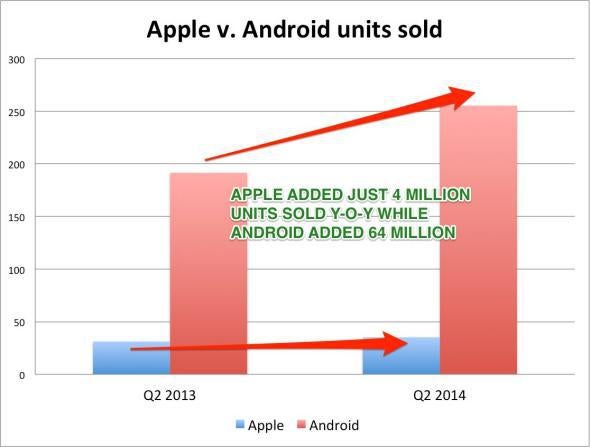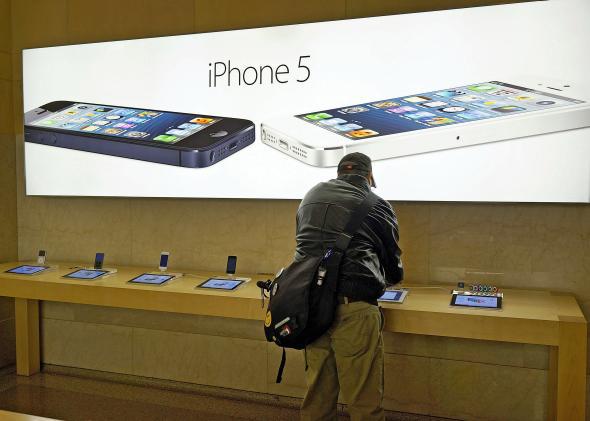This story originally appeared in Business Insider.
Apple may be the most successful, envied tech company on the planet. But its dominance is far from obvious, according to new data from the International Data Corporation, which tracks worldwide smartphone shipments.
Apple’s market share for the iPhone slipped year on year to just 11.7 percent of the entire market, while Android’s market share increased to 84.7 percent.
Similarly, while Apple sold 35.2 million phones last quarter, an increase of 4 million, Android phones reached 255.3 million new buyers, an increase of 64 million new phones, IDC reports.
In other words, there are seven Android phones sold for every one iPhone.
The news that Android vastly eclipses iPhone in the market will feel surprising to people in the U.S. and certain Western Europe countries. Apple has healthy market share in a few rich countries. On a global basis, however, Apple occupies only a niche part of the market among high-end buyers.
Here is what that looks like in chart form:

IDC/Business Insider
And in terms of actual sales:

IDC/Business Insider
There is one huge caveat: Apple charges much more for its phones than Android-makers do and takes a huge chunk of the world’s smartphone profits by doing so. Apple doesn’t actually want buyers who seek the cheapest, least-profitable phones. And its customers tend to not want Android products.
In the Apple worldview, iPhone is its own universe and the scale of Android is irrelevant. Declining market share is merely cosmetic as long as the profits keep flowing.
But Apple ought to be concerned that it is being relegated to just one out of every 10 phone buyers. App developers and e-commerce businesses tend to want to reach everyone they can, not just the richest 11.7 percent.
Luckily, Apple is about to launch iPhone 6 in September, which ought to reverse its declining market share. That phone will have a larger screen, either 4.7 inches or 5.5 inches.
It’s mere size is crucial if Apple is to beat back the Android threat. As we’ve noted repeatedly, and as Apple admits internally, demand is strongest for phones that have large screens and cost under $300—and Apple doesn’t sell either of those things. Those are Android phones, basically.
The research company Jana just published some new data on international demand for large-screen smartphones. In fast-developing countries—where all the new demand is—people mostly want screens bigger than 5 inches. Bigger than any iPhone currently on the market, in other words.
There is a persistent level of demand for small phones. (You probably know someone who likes the fact they can use them with one hand and they fit in your pocket easily.) But it is not as significant as the demand for “phablets” with big screens that make videos and photos a pleasure.
In South Africa, a third of the market wants the biggest phone available.
This is why the iPhone 6 is so crucial for Apple. Finally, it will give the company a device that competes head to head with the Android phones that have dominated the market space where growth is hottest.
The price of iPhone 6 is thus crucial. Apple will likely keep it in the $700 range. That will turn off many shoppers who are already deciding that Android is a better value. In China, for instance, the No.1 phone brand is now Xiaomi, which makes beautiful Android phones for half the price of an iPhone.
See also: Apple’s iPhone 6 Faces a Big Pricing Problem Around the World
